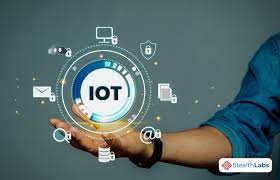Privacy is a crucial aspect of IoT deployments, as IoT systems often involve the collection, processing, and sharing of sensitive personal or user-related data. Privacy considerations help ensure that individuals’ rights and expectations regarding their data are respected. Here are some key privacy considerations in IoT deployments:
- Data Minimization: Collect and retain only the minimum necessary data required for the intended purpose. Avoid collecting excessive or unnecessary personal information. Limiting data collection reduces the potential privacy risks associated with storing and processing large amounts of sensitive data.
- Consent and Transparency: Obtain clear and informed consent from users before collecting and processing their personal data. Provide clear and easily understandable information about what data is being collected, how it will be used, and how long it will be retained. Users should have the ability to review and update their consent preferences.
- Informed Consent: Obtain informed consent from individuals whose data is being collected. Clearly communicate the purpose, scope, and duration of data collection, as well as any intended data sharing or processing activities. Allow individuals to make informed choices about how their data is used and provide options for opt-in or opt-out preferences.
- Notice and Transparency: Provide clear and easily understandable privacy notices that explain the data collection, processing, and sharing practices of the IoT system. Clearly state the purpose of data usage, the types of data collected, and any third parties involved. Transparent communication builds trust and helps individuals make informed decisions about their privacy.
- User Control and Preferences: Empower users with control over their data. Provide options for individuals to access, modify, or delete their personal information. Allow users to set privacy preferences, such as the level of data sharing or the retention period for their data. Respect user choices and preferences regarding the use and disclosure of their data.
- Security Safeguards: Implement robust security measures to protect personal data from unauthorized access, disclosure, or breaches. This includes encryption, access controls, secure storage, and secure communication protocols. Regularly assess and update security measures to address emerging threats and vulnerabilities.
- Anonymization and Pseudonymization: Anonymize or pseudonymize personal data whenever possible. Anonymization removes personally identifiable information (PII) from the data, while pseudonymization replaces identifiable information with pseudonyms. These techniques help protect individual privacy while still enabling data analysis and system functionality.
- Data Sharing and Purpose Limitation: Limit data sharing to authorized parties and for legitimate purposes. Clearly define the purposes for which data is collected and ensure that data is not used or shared beyond those purposes without appropriate consent or legal basis. Implement data sharing agreements or contracts that uphold privacy obligations.
- Secure Data Handling: Implement secure data handling practices throughout the data lifecycle. This includes secure data transmission, secure storage, secure processing, and secure disposal of data. Regularly assess and audit data handling processes to identify and mitigate potential privacy risks.
- Secure Data Storage: Implement appropriate security measures to protect the stored data on the IoT devices and associated servers or cloud platforms. This includes using encryption, access controls, and regularly updating security patches to address potential vulnerabilities.
- Anonymization and Aggregation: Where possible, aggregate and anonymize data to minimize the risk of individual identification. This helps protect user privacy while still allowing for data analysis and insights.
- Regular Security Audits: Conduct regular security audits and vulnerability assessments of the IoT devices and the associated infrastructure to identify and address potential security and privacy risks.
- Compliance with Regulations: Ensure compliance with relevant privacy regulations such as the General Data Protection Regulation (GDPR) in the European Union or other regional data protection laws. Stay updated on applicable privacy regulations and adjust your IoT deployment accordingly.
- User Control and Access: Provide users with the ability to control their personal data. This can include features such as opt-out mechanisms, the ability to delete or modify personal data, and granular control over data sharing options.
- Privacy by Design: Incorporate privacy considerations from the early stages of IoT system design and development. Implement privacy-enhancing technologies and practices, such as privacy impact assessments, privacy-aware default settings, and data protection mechanisms. Ensure that privacy is a fundamental consideration throughout the system’s lifecycle.
- Compliance with Regulations: Adhere to applicable privacy laws and regulations, such as the General Data Protection Regulation (GDPR) in the European Union or the California Consumer Privacy Act (CCPA) in the United States. Understand the legal requirements and obligations regarding data protection and privacy and ensure compliance with relevant regulations.
- User Education: Educate users about the privacy implications of the IoT deployment, including how their data will be collected, used, and protected. Provide clear instructions on how to secure their devices, use strong passwords, and be vigilant against potential privacy threats.
Privacy considerations are an ongoing process and should be regularly reviewed and updated as new privacy risks or regulations emerge. Engage in open and transparent communication with individuals, stakeholders, and regulatory authorities to demonstrate a commitment to privacy and build trust in IoT deployments.
SHARE
